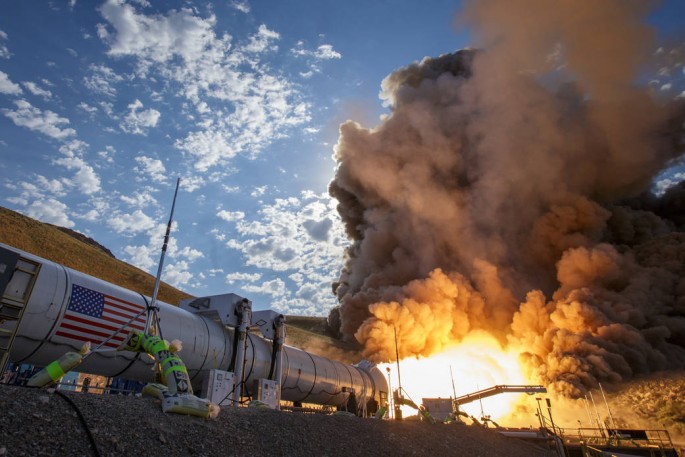NASA officials announced that its powerful booster rocket just completed its first test fire in Utah, which will also be used for the first mission to Mars by 2030. New data from this crucial test will now be taken into account for the epic preparation of the first unmanned flight to Mars in 2018.
NASA revealed on Tuesday that this rocket fire test is aimed at checking its propellant behavior in cooler conditions, demonstrating real progress toward NASA's long term spaceflight missions under the new Space Launch System, that will venture into deep space.
This firing occurred Tuesday as a final qualification test for the booster according to NASA officials. The booster was fired on a horizontal position where environmental ground temperatures reached 40 degrees Fahrenheit, on site at the Orbital ATK facility.
Last year, a similar rocket test was carried out at 90 degrees Fahrenheit that resulted in an "acceptable performance" according to NASA on Tuesday. According to SLS program manager, John Honeycutt, the booster's hardware is now currently in the production stage for every part of the rocket. He adds that NASA is also on the road to progress every single day on the Orion spacecraft along with ground systems that will support the launch from the Kennedy Space Center in Florida.
The first test flight for the SLS program which will involve an unmanned test flight of NASA's new Orion capsule, is slated for late 2018 where the spacecraft will be launched in lunar orbit. The first manned mission of the Orion will take place in 2023 where the first human mission to Mars is due as early as 2030.
This new SLS booster rocket currently measures at 54 meters in length and can burn 5.5 tons of propellant fuel for every second. NASA's Orion will be fitted with two booster rockets and four main engines where the boosters will burn for two minutes into the flight, that will generate 75 percent more thrust for Orion to enter lower Earth orbit, that can also lift 70 metric tons to a maximum of 105 tons for longer spaceflight missions.



























